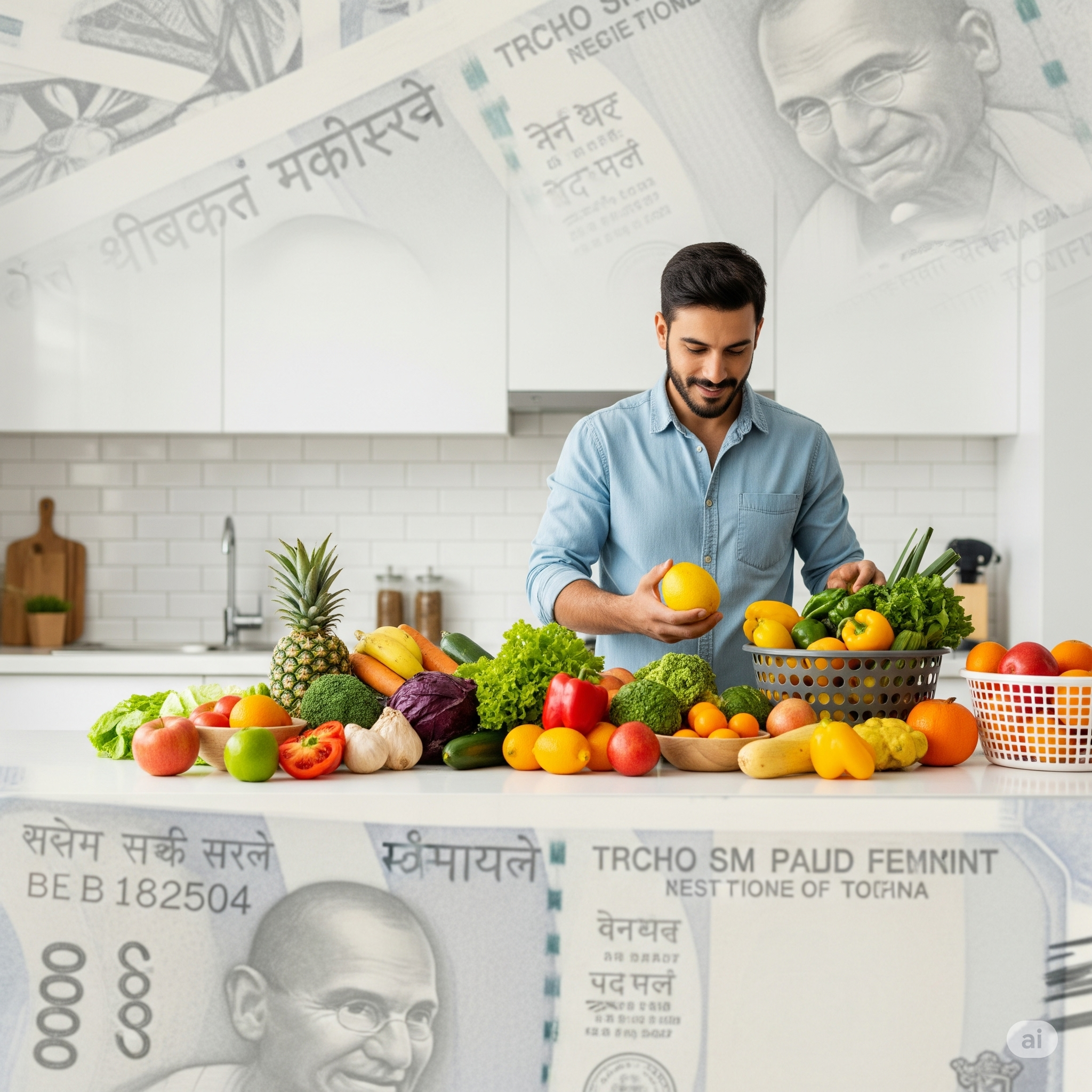The main objective of this article is to empower DailyHindNews readers with practical, actionable strategies to significantly reduce their grocery expenses without compromising on nutrition or quality. We aim to transform grocery shopping from a budget drain into a smart spending opportunity.
Topic and Core Questions:
This article will focus on the topic of “Smart Spending: How to Save Money on Groceries Easily.” It will answer the following core questions:
- Why are grocery prices rising, and what impact does this have on household budgets?
- What fundamental mindset shifts can help consumers save money on groceries?
- What practical pre-shopping strategies can lead to significant savings?
- How can smart choices in the grocery store reduce overall costs?
- What post-shopping habits contribute to long-term grocery savings and reduced food waste?
- Are there any emerging trends or technologies that can further assist in grocery budgeting?
Introduction: Navigating the Aisles to Savings
In recent years, the humble grocery bill has become a significant point of stress for households across India. With inflation impacting essential goods and the cost of living steadily climbing, finding ways to stretch every rupee has never been more crucial. According to a recent report by the National Statistical Office (NSO) in early 2025, food inflation continues to be a key driver of consumer price index (CPI) fluctuations, directly impacting the common household’s budget. This article will delve into the art of smart grocery shopping, offering a comprehensive guide to help you save money easily, without sacrificing delicious and nutritious meals. From meticulous planning to savvy in-store decisions and effective post-shopping management, we’ll equip you with the tools to take control of your grocery spending.
Why Your Grocery Bill is Growing: Understanding the Landscape
Before we dive into solutions, it’s essential to understand the forces at play. Several factors contribute to the escalating cost of groceries:
- Global Supply Chain Disruptions: Events like geopolitical tensions, extreme weather, and logistical challenges continue to impact the availability and pricing of various commodities.
- Rising Fuel Costs: Transportation is a major component of food distribution, and higher fuel prices directly translate to increased grocery costs.
- Climatic Impact on Agriculture: Unpredictable weather patterns, including droughts and unseasonal rains, affect crop yields and can lead to price volatility for fresh produce. A 2024 study by the Indian Council of Agricultural Research (ICAR) highlighted the significant impact of climate change on agricultural productivity and food prices.
- Increased Demand and Changing Consumer Preferences: A growing population and evolving dietary habits can also influence demand and, consequently, prices for certain food items.
Understanding these dynamics is the first step towards smarter spending, as it highlights the need for a proactive and strategic approach to grocery shopping.
The Foundation of Savings: Mindset Shifts for Smart Spending
Saving money on groceries isn’t just about finding deals; it’s about adopting a strategic mindset.
- Budget First: Before you even think about what to buy, determine how much you can spend. A 2023 survey by a leading financial advisory firm revealed that households with a dedicated grocery budget spent, on average, 15% less than those without.
- Meal Planning is King: This is perhaps the single most impactful strategy. Plan your meals for the entire week, factoring in breakfasts, lunches, dinners, and snacks. This minimizes impulse buys and ensures you only purchase what you need.
- Embrace Flexibility: Be open to substituting ingredients based on what’s on sale or in season. If a recipe calls for bell peppers but onions are significantly cheaper, consider adjusting your meal plan.
- Reduce Food Waste: A significant portion of household food goes to waste. Recognizing this and making efforts to consume what you buy is crucial. The Food and Agriculture Organization (FAO) of the United Nations estimates that a considerable percentage of food produced for human consumption is lost or wasted globally, highlighting a similar trend in India.
Pre-Shopping Power Plays: Strategies Before You Hit the Store
The real savings begin long before you step into the grocery store.
- Audit Your Pantry and Fridge: Before making your list, check what you already have. This prevents duplicate purchases and inspires meals based on existing ingredients.
- Create a Detailed Shopping List (and Stick to It!): This is non-negotiable. A comprehensive list, categorized by aisle, helps you navigate efficiently and avoid impulse purchases.
- Check Weekly Flyers and Digital Coupons: Most major grocery chains in India release weekly flyers showcasing discounted items. Many also offer digital coupons through their apps. Leveraging these can lead to substantial savings. For instance, reliance on e-commerce grocery platforms like JioMart and BigBasket often provides exclusive app-only deals.
- Go Generic or Store Brand: For many staple items like rice, sugar, flour, and spices, generic or store-brand alternatives often offer comparable quality at a lower price. Consumer reports from 2024 consistently show minimal taste or quality differences for these items.
- Eat Before You Shop: Shopping on an empty stomach is a recipe for overspending. A full stomach helps you make rational decisions.
- Consider Loyalty Programs: Many supermarkets offer loyalty cards that provide exclusive discounts, cashback, or points that can be redeemed later. Ensure you sign up and utilize them.
In-Store Savvy: Making Smart Choices While You Shop
Once inside the supermarket, maintain your strategic approach.
- Stick to Your List: This is the golden rule. Avoid Browse aisles that aren’t on your list.
- Compare Unit Prices: Don’t just look at the total price. Check the unit price (price per 100g, per kg, or per piece) to truly understand which size or brand offers the best value. This is especially useful for items like cereals, oils, and packaged snacks.
- Shop the Perimeter: The freshest and often healthiest items (produce, dairy, meat) are typically found around the perimeter of the store. The inner aisles often contain more processed and expensive items.
- Buy Seasonal Produce: Seasonal fruits and vegetables are not only fresher and tastier but also significantly cheaper due to abundance. For example, buying mangoes in peak season (April-June) will be far more economical than in the off-season.
- Buy in Bulk (Wisely): For non-perishable items you use frequently (e.g., rice, lentils, spices), buying larger quantities can be cost-effective. However, ensure you have adequate storage and will genuinely use the entire quantity before it spoils.
- Limit Processed Foods and Convenience Items: These often carry a premium due to preparation and packaging. Cooking from scratch, even partially, can save a lot.
- Beware of End-Cap Displays: These are often strategically placed to encourage impulse buys, even if the “deal” isn’t truly exceptional.
- Use Cash or a Debit Card: If you tend to overspend with credit cards, using cash or a debit card can help you stick to your budget more rigorously.
Post-Shopping Habits: Extending Your Savings
The savings don’t stop when you leave the store. What you do with your groceries afterward is just as important.
- Proper Storage: Learn the best ways to store different foods to extend their shelf life. For instance, storing herbs correctly or knowing which vegetables need refrigeration versus room temperature can prevent spoilage.
- Batch Cooking: Dedicate time once or twice a week to prepare large quantities of staples like cooked grains, chopped vegetables, or roasted proteins. This saves time and ensures you have quick, healthy meal components ready.
- Creative Leftover Management: Transform leftovers into new meals. Yesterday’s dal can become a base for a soup; leftover rotis can be repurposed into wraps.
- Compost Food Scraps: For unavoidable food waste (e.g., vegetable peels), consider composting. While not directly saving money, it’s an environmentally responsible practice that reduces landfill waste.
- Track Your Spending: Regularly review your grocery expenses to identify patterns and areas for further improvement. Many banking apps now offer spending insights that can be helpful.
Emerging Trends and Technologies for Grocery Budgeting
The landscape of grocery shopping is constantly evolving, with technology offering new avenues for savings.
- Grocery Comparison Apps: Several apps (though less prevalent in India compared to the West, some are emerging) allow you to compare prices across different supermarkets.
- Subscription Boxes (with caution): For specific dietary needs or convenience, some meal kit or produce subscription boxes can be cost-effective if carefully chosen and managed, though they often cater to a premium segment.
- “Imperfect” Produce Services: Some startups are focusing on selling “ugly” or cosmetically imperfect produce at a discount, offering a sustainable and economical option.
- AI-Powered Meal Planners: Advanced apps are leveraging AI to suggest meal plans based on ingredients you have, your budget, and dietary preferences, optimizing for minimal waste.
Conclusion: Your Path to a Leaner Grocery Bill
Saving money on groceries isn’t about deprivation; it’s about smart choices and strategic planning. By adopting a proactive mindset, leveraging pre-shopping strategies, making informed decisions in-store, and managing your purchases effectively post-shopping, you can significantly reduce your grocery bill. Remember, every rupee saved on groceries is a rupee available for other financial goals. Start implementing these easy strategies today, and watch your savings grow, making a tangible difference to your household budget and contributing to a more sustainable consumption pattern.


